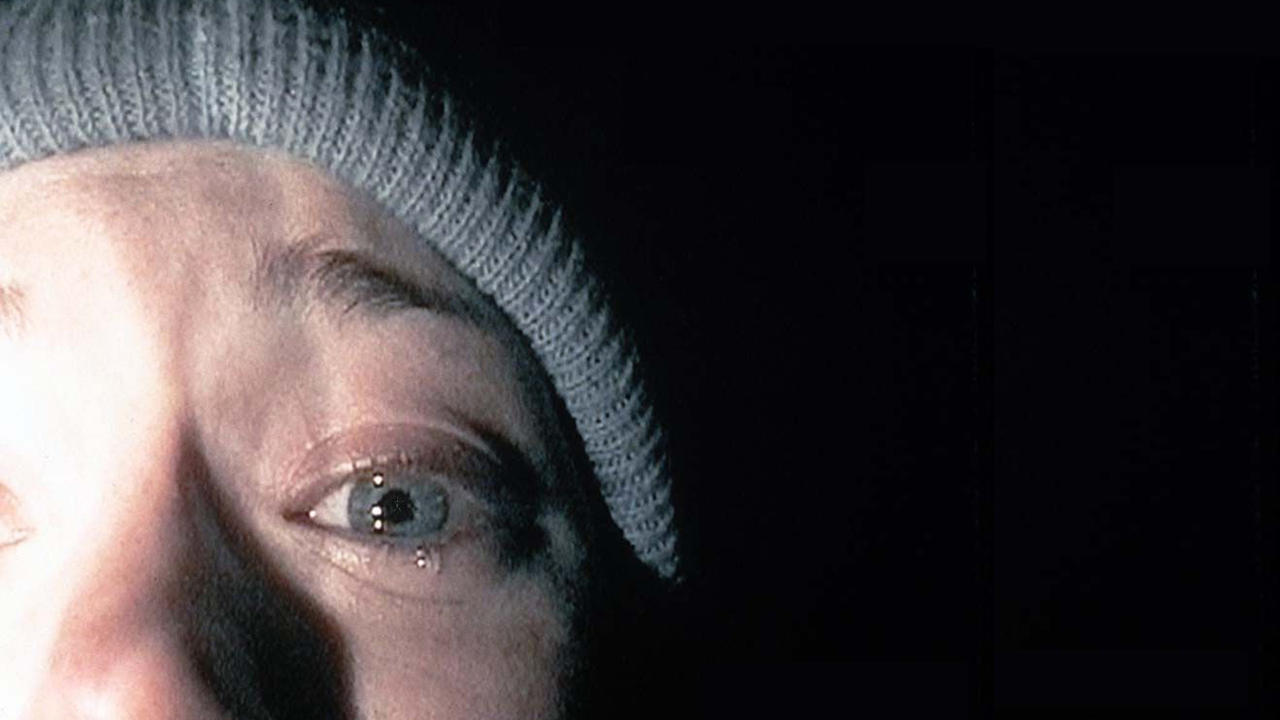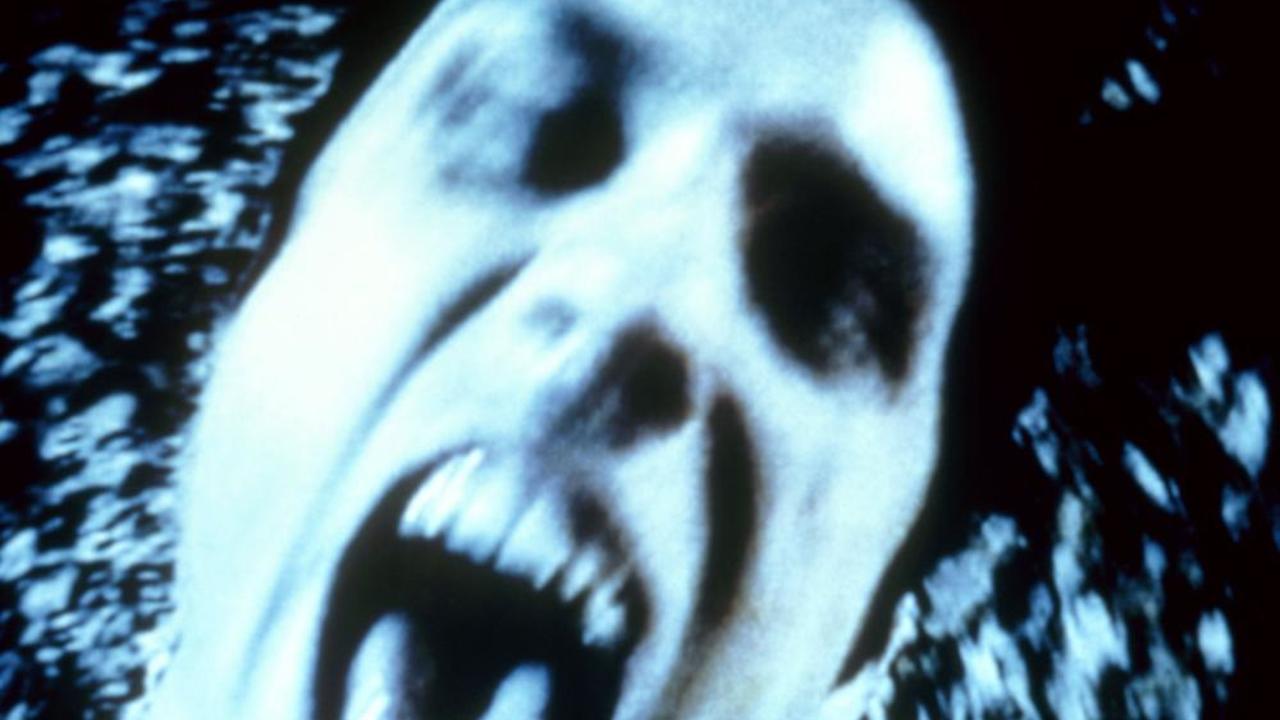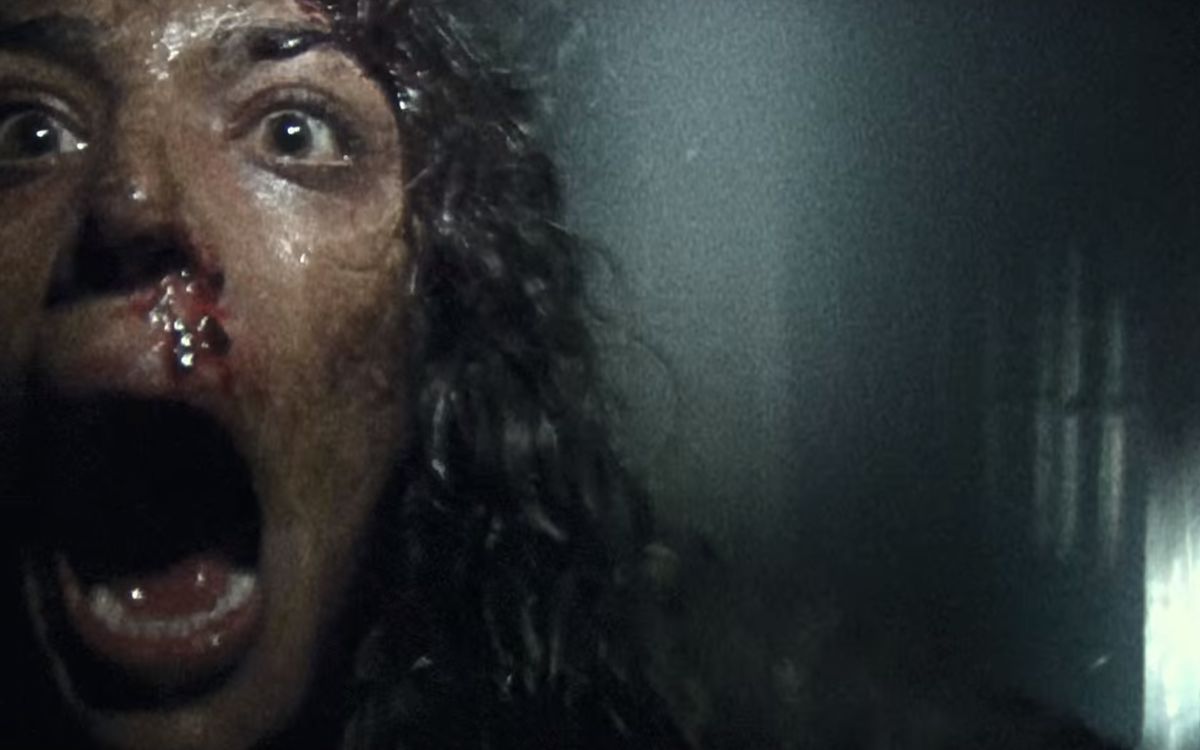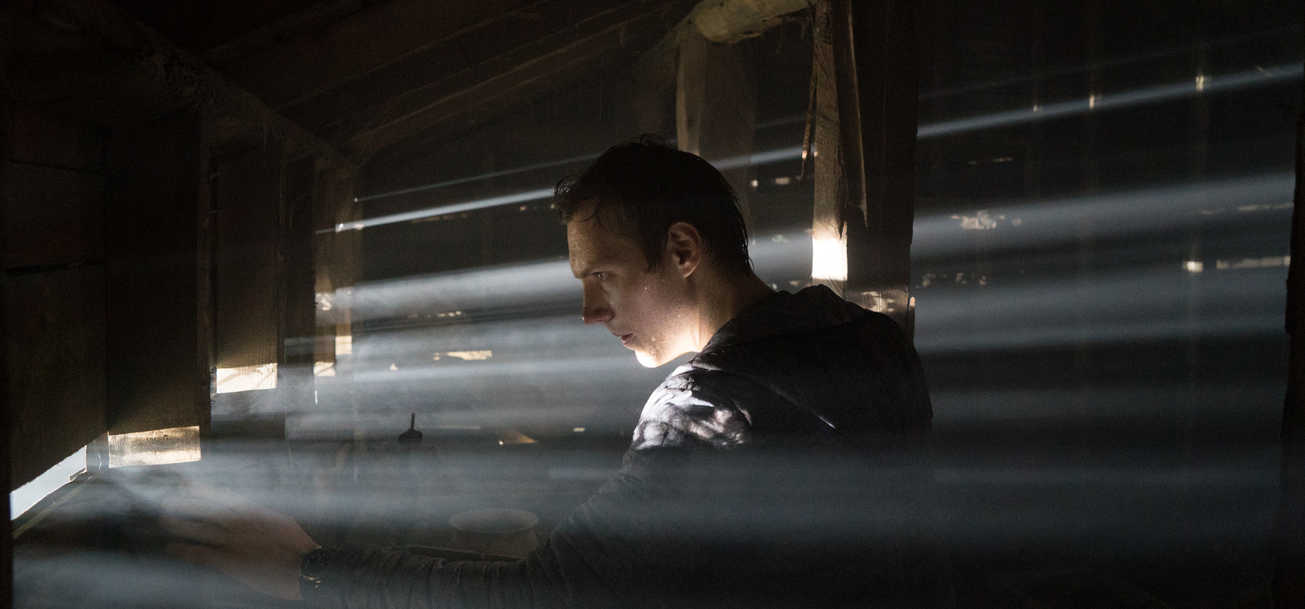31 Days, Day 3: The (BLAIR) WITCH’s Brew
[Editor’s Note: Garrett and his PIC Dan Scully talked about the Blair Witch saga on their podcast recently, so after you read go listen to the awesome and comprehensive discussion.]

“What just happened?” should be the tagline to every entry in the Blair Witch series. What began as an incredible experiment in “experiential” filmmaking and left us all scratching our heads as to whether the Black Hills of Berkittsville were really haunted or not gave way to two more, very different headscratchers.

The Blair Witch Project has since become the herald of the found footage era that has raged on for nearly two decades now, and yet it remains the best example of the form to date. It’s unflinching commitment to its own reality is nearly jarring in its authenticity. There are extended sequences where the footage itself is meaningless garbage – an almost entirely black screen or so shaky and constantly moving it’s just a motion blur – but the actual character moment that you can still hear from the audio is so real and so revealing it’s clear why it’s “necessary” and included in the version of the tapes you are watching, and therefor the whole moment feels more “true” because you believe the character wouldn’t be concerned with framing a shot in that moment.
Those formal elements combined with the incredible, naturalistic performances of the three leads (that are often overlooked, even when praising this movie) create an overwhelming sense of dread – a feeling that real evil is hiding inside these tapes, just off camera, just outside the frame, ever encroaching on your sense of safety. It’s so effective, I’ve spent the 17 years since seeing it believing that in the last shot you finally see the witch. I’ve spent almost two decades believing that the reason this movie was so scary was because of the way they finally reveal and depict the witch. I have a very distinct memory of her killing Mike, the guy in the corner, and then turning towards Heather’s camera before it cuts to black. I remember what she looks like.
But this never happens. There is no witch in The Blair Witch Project. There’s just a sense that something absolutely horrible might happen at any moment; that real terror lies just around every corner. And the movie is so effective in bringing you into that fear and that paranoia, that it actually convinced me I saw something I didn’t. That is true cinematic power. And it’s also exactly what this movie is about – fear.
These kids go crazy with fear in the woods. You could read the whole thing as non-supernatural and say they’re just in a paranoid frenzy by the end. And the way they promoted the movie and got people so excited about it in 1999 was by saying it was real. And in the pre-social media age, for at least a week of this movie’s release people bought into that truth. This horror movie isn’t about punishing teenagers for doing drugs or having sex, it’s a movie about the power of fear, and there’s something fascinating about it being made just two years before 9/11.
It was also made during the advent of reality television and has some interesting asides about the camera distorting our reality. There’s a detachment from reality that the screen allows for, and perhaps the movie is arguing that this allows for a lie to become the truth. People will buy into anything as long as they never actually encounter the truth. At one point Heather says something about not being able to get lost in America anymore, and yet they end up completely lost, wrapped up in their own paranoia, unable to see their way home clearly. To control a large populace that is generally comfortable, you need to invent things for them to be afraid of, and with a TV in every household you can do that through “reality” like the news.
Perhaps I’m inventing a metaphor and that last conclusion is a bit of a stretch, but whether or not they intended to make such an interesting investigation of fear and truth right on the precipice of a major shift in America’s understanding of these concepts doesn’t matter. By committing to their form and leaving the question of “What just happened?” on the table, the filmmakers made a movie that is so effective in convincing you of its reality that any modern viewer won’t be able to help but recognize its thematic resonance in our media-saturated culture.

Unfortunately, Book of Shadows: Blair Witch 2 forces the viewer to ask the question “What just happened?” for entirely different reasons. Framed as a “reenactment” of the events that followed the release of The Blair Witch Project, Book of Shadows bears almost no resemblance to its predecessor, nor its own name. That framing device is used as an excuse to ditch the found footage aesthetic for a more slick, almost made for MTV look, and the Book of Shadows is never referenced once in the entire movie – I have no idea what it means or how it might fit into the Blair Witch mythos because it is straight-up nonexistent in the world of this film. The movie doesn’t even really take place in the woods, and isn’t necessarily about the Blair Witch either – it’s a whodunnit murder mystery about a group of teens that get so fucked up on drugs and alcohol one night, they accidentally get possessed by demonic forces brought on by a (not specifically the Blair) witch.
That being said – it is utterly fascinating, if only as a time capsule. There’s an abortion subplot, the aforementioned demonic possession as the result of sex and drugs, and an obsession with the internet. The best scene in the movie, for reasons that should be immediately clear, is the reveal of the drug-fueled orgy, set to “Feel Good Hit of The Summer” by Queens of the Stone Age, linking the sex and the drugs to the rock ‘n’ roll. This movie is a reflection of the fears of the time. Pre-9/11, these were things we were very concerned about – the way music was influencing our kids and encouraging them to do drugs which was leading them to have pre-marital sex which was leading to an epidemic of teenage abortion. If The Blair Witch Project is an exploration of the power that fear can hold over people and the way new media can spread rampant fear, Book of Shadows is an example of said media exploiting and perpetuating fear. And it seems to be doing so knowingly, with its tongue firmly in its cheek, which is perhaps worth something.

Thankfully, the most recent sequel, Blair Witch, returns to the aesthetic and form of the original, and gets back to the important question of “What just happened?” though again, in its own particular way. While this sequel does start to get explicit about the nature of the events that befall curious campers in the Black Hills Forest, it smartly leaves the specifics of the events themselves completely unclear. The movie craftily uses the touchstones laid out in the original to let the viewer know that these events are tied to the “Blair Witch” herself, as she’s “depicted” in the original, yet I am no closer to being able to explain to you who she is, what exactly it is that she does, or why she does it. I find that fascinating, and ultimately terrifying – it’s almost Lovecraftian in the way it shows your specific phenomena and yet leaves you with no understanding of that phenomena.
The movie also brilliantly uses new technology to its advantage, rather than its detriment. Body cams and apps that allow for remote viewing of a live feed are creatively used to increase the tension, rather than take away from it, and a drone is used to create establishing shots while simultaneously obscuring the sense of space and geography. The filmmakers use these tools to cheat the found footage concept and edit between multiple angles from multiple sources, crafting a modern horror movie out of the “found” conceit without truly betraying it. It’s a pretty incredible feat that they manage to pull this off.
In fact, that’s exactly why this is a great horror sequel – it reminds me of the 3rd Nightmare on Elm Street movie, Dream Warriors. It’s both reverent and inventive – it is a proper Elm Street movie, abiding by the original’s mythology and rules, while slightly pushing both forward with unique tweaks and twists on the original’s ideas. In Blair Witch, both the form and the mythology established in the original are expanded upon without ever answering the question of “What just happened?” allowing that sense of dread from the original to creep back in. It doesn’t quite achieve the same levels of dread as the original, but it fills that void with inexplicable details that will haunt you when you’re trying to fall asleep.
And truthfully, I think this is the Blair Witch movie I could see myself re-watching the most. Filmmaking team Wingard and Barrett packed their movie full of weird little details that reward subsequent viewings and provide slightly more context for the mythology established in the original film. And no matter where you fall on the spectrum of how explicit you like your Blair Witch horror, the best thing this choice allows them to do is create one hell of ride. This movie is a veritable house of horrors, with numerous very memorable set pieces that never feel forced or contrived and come at a rapid pace that only gets quicker as the film goes on. The movie does this great thing where it basically skips the 2nd act – we get all the set up out of the way, and then once it’s ready to truly terrorize you, it just opens up at a blazing pace and never slows down. As soon as tents start flying, you better grip your seat and hang on tight, because the movie is not going to let up until its final frame.
While I still find the original more terrifying, this entry is perhaps more satisfying. It replaces the “experiential verisimilitude” of the original with “experiential roller coaster pants shitting” that would hold up to repeated Halloween viewings, where I think the original is probably only so effective if left with 20 year gaps between viewings. So while this won’t hold the coveted 5-star rating the original does, that is simply a matter of taste. This is a seriously finely crafted, pretty original horror experience that should please both hardcore fans of the original, as well as the dorks that always complain that “nothing happened!” in the original.

It’s never that “nothing happened” in the Blair Witch series – it’s always a question of “What just happened?” and that’s why good or bad, I’m excited that we now live in a world where this is a true horror franchise, one that I hope continues to grow and change over time. As long as we’re always left asking that question, I think there’s always going to be a reason to dip back into this mythology, as exploring the horror of the unknown and unknowable is equally as rare as it is rewarding.




